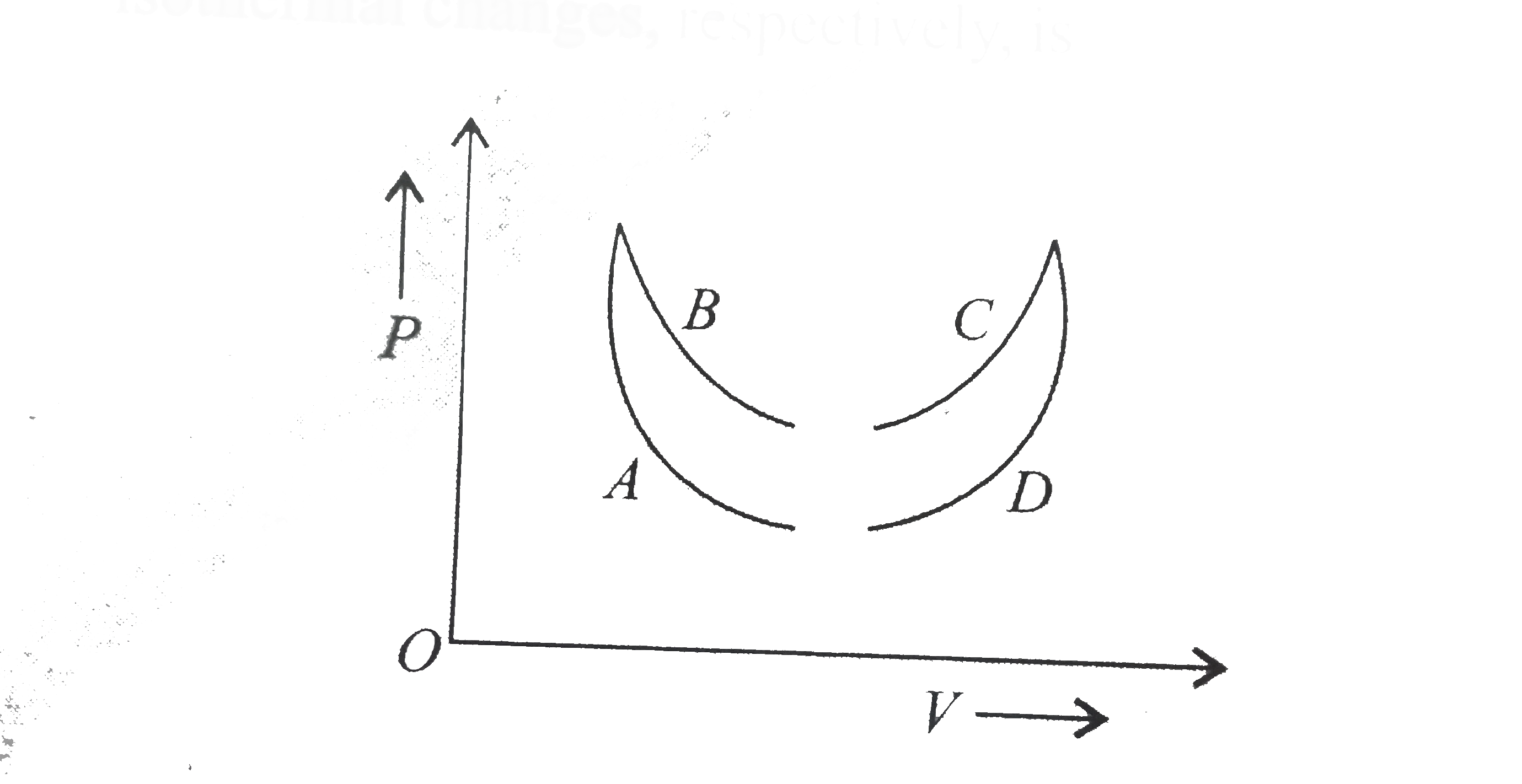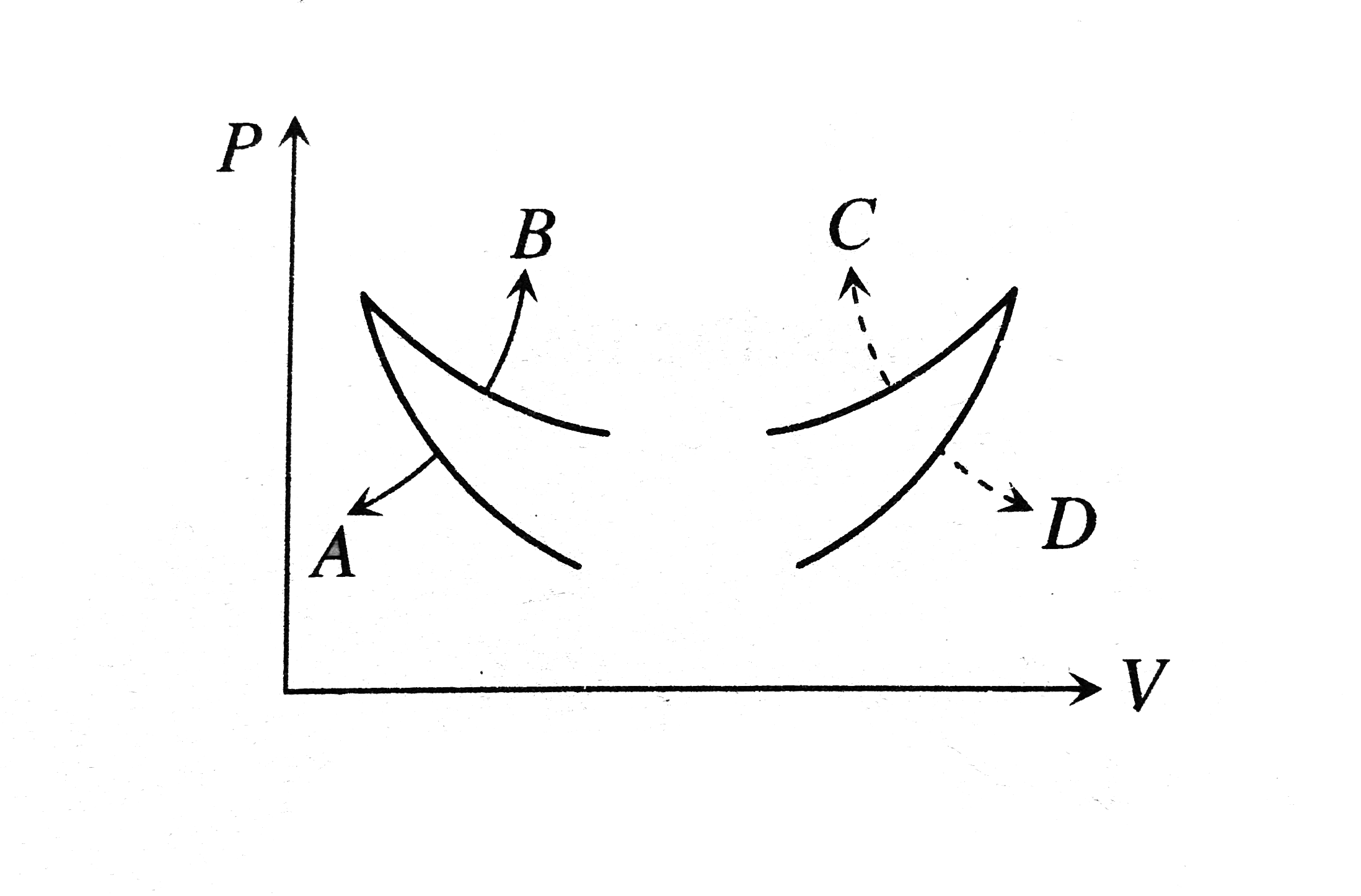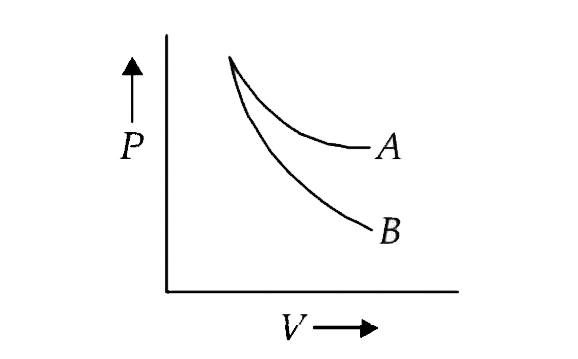Four curves A,B,C and D are drawn in figure for a given amount of gas. The curve which represents adiabatic and isothermal changes, respectively, is

C and D respectively
D and C respectively
A and B respectively
B and A respectively
The correct Answer is:C
Step by step video, text & image solution for Four curves A,B,C and D are drawn in figure for a given amount of gas. The curve which represents adiabatic and isothermal changes, respectively, is by Chemistry experts to help you in doubts & scoring excellent marks in Class 11 exams.
Updated on:21/07/2023Topper's Solved these Questions
- MISCELLANEOUS (TOPICS OF GENERAL INTEREST)BOOK - OP TANDONCHAPTER - MISCELLANEOUS (TOPICS OF GENERAL INTEREST)EXERCISE - SET-V: Matching type Questions
37 Videos
- INTRODUCTION TO ORGANIC CHEMISTRY BOOK - OP TANDONCHAPTER - INTRODUCTION TO ORGANIC CHEMISTRY EXERCISE - SINGLE INTEGER ANSWER TYPE
4 Videos
- OXIDATION AND REDUCTION (REDOX REACTIONS)BOOK - OP TANDONCHAPTER - OXIDATION AND REDUCTION (REDOX REACTIONS)EXERCISE - SECTION V
3 Videos
Similar Questions
Knowledge Check
Four curves A,B,C and D are drawn in Fig. for a given amount of gas. The curves which represent adabatic and isothermal changes
 AC and D, respectivelyBD andC, respectivelyCA and B, respectivelyDB and A, respectively
AC and D, respectivelyBD andC, respectivelyCA and B, respectivelyDB and A, respectivelyFour curves A,B,C and D are drawn in Fig. for a given amount of gas. The curves which represent adiabatic and isothermal changes
 AC and D respectivelyBD and C respectivelyCA and B respectivelyDB and A respectively
AC and D respectivelyBD and C respectivelyCA and B respectivelyDB and A respectivelyIn the given graph, adiabatic and isothermal curves are shown. Then,
 Athe curve A is isothermalBthe curve B is isothermalCthe curve A is adiabaticDthe curve B is adiabatic
Athe curve A is isothermalBthe curve B is isothermalCthe curve A is adiabaticDthe curve B is adiabatic
In the following figure, four curves A,B, C and D are shown. The curves are

View SolutionWhich of the following P-V curve best represents. As isothermal process?
View SolutionWhich curve in figure represents the curve of ideal gas?

View SolutionWhich curve in figure represents the curve of ideal gas ?

View SolutionFigure shows four PV diagrams. Which of these curves represent isothermal and adiabatic processes?

View Solution

